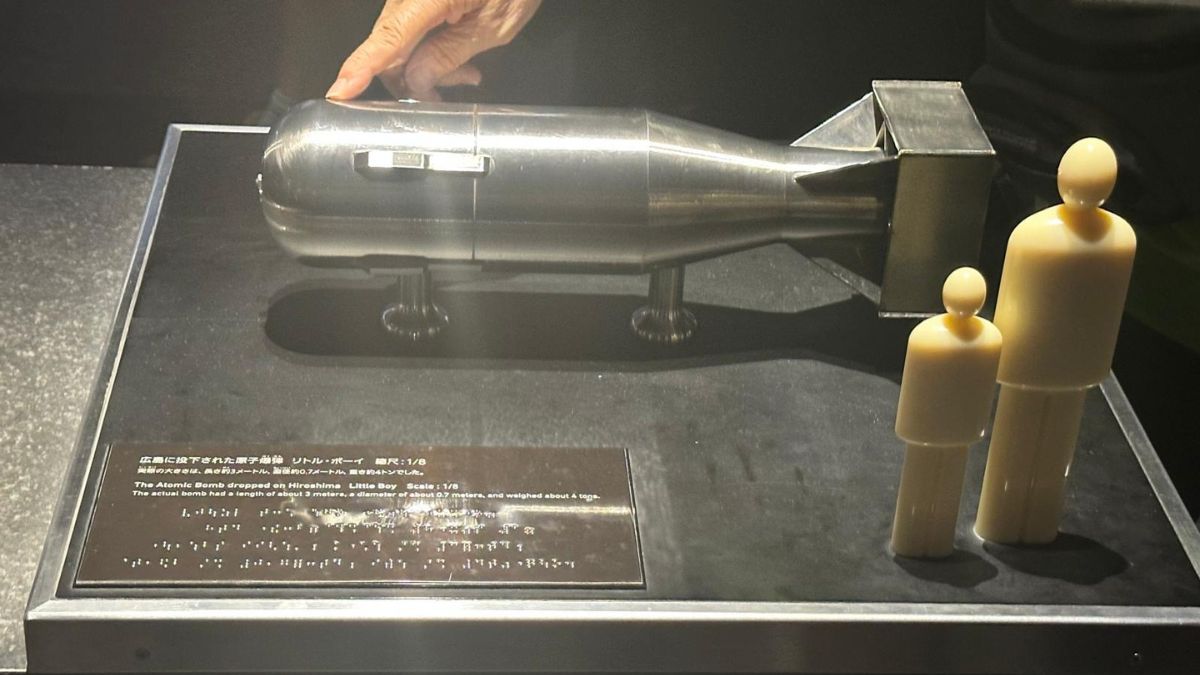A poignant journey through Hiroshima Peace Memorial Museum
 ) Photo of the atomic bomb that was dropped in Hiroshima at the museum
) Photo of the atomic bomb that was dropped in Hiroshima at the museum
It takes a insensitive soul to walk through the Hiroshima Peace Memorial Museum and remain unmoved.
Situated in the heart of Hiroshima Peace Memorial Park, this museum stands as a striking reminder of one of history’s darkest chapters—the atomic bombing of Hiroshima during World War II.
Built in August 1955, adjoining the Hiroshima Peace Memorial Hall (now the International Conference Centre Hiroshima), the museum is the most visited attraction in the city. While many of us have read about the devastation caused by the atomic bomb, it is here that the horror is felt at its most personal and profound.
The museum collects and displays belongings left behind by the victims: scorched clothing, melted watches, burnt school uniforms, and soul-stirring photographs. These objects carry the raw grief, rage, and pain of real people whose lives were shattered in a single moment.
An excerpt from the museum’s English guidebook reads:
“Having now recovered from the A-bomb calamity, Hiroshima’s deepest wish is the elimination of all nuclear weapons and the realisation of a genuinely peaceful international community.”
The museum has two main wings. The East Wing digs up the history of Hiroshima before the bombing, the decision to drop the bomb, life during and after the war, and the evolving nuclear threat. It also presents Hiroshima’s role in the global movement for peace. The West Wing, part of the original museum, focuses more intensely on the ruination itself. Here, visitors come across the personal effects of victims: shoes, glasses, lunch boxes; each a testimony to the human cost of nuclear warfare.
A visit to the museum can easily take a full day. The emotional impact is heavy. War in any form is brutal, but the idea of nuclear conflict is especially unthinkable in a civilised world.
At the Hiroshima Peace Memorial Museum, visitors encounter haunting stories that reflect the unimaginable suffering caused by the atomic bomb. One such account is that of a young child who was shielded by her mother at the moment of the blast. While the child survived the initial explosion, the mother’s back was severely burned from the intense heat and radiation as she protected her child with her own body.
Another child, also a survivor of the bombing, seemed to have escaped major injuries but later developed leukaemia—a common consequence of radiation exposure—and tragically passed away at the age of 15. Her story echoes that of Sadako Sasaki, the young girl who became a symbol of peace after folding over a thousand paper cranes in the hope of healing. Her death, too, inspired action.
In the aftermath of these tragedies, children across Hiroshima came together in solidarity. At the site of their destroyed school, they built a Children’s Peace Monument, not only to honour Sadako but also to commemorate all the young lives lost to the bomb and its aftermath. Topped with a statue of a girl holding a golden crane, the monument stands as a powerful symbol of peace, remembrance, and the innocent lives caught in the horrors of war.
The images at the museum, many of which show children who suffered terribly, are devastating. My elder son wept several times during our visit, unable to bear the intensity of what he saw. Most visitors move through the exhibits in solemn silence. It is particularly striking to see how many American tourists come to pay their respects.
Japan, and Hiroshima in particular, rose from the ashes of that tragedy with dignity and strength. The Japanese have come out of the tragedy with remarkable dignity and strength. In doing so, they have shown the world what resilience, reconciliation, and a deep commitment to peace can achieve. Unlike many nations that might have chosen the path of revenge, Japan chose restraint, evident in the very name of its military: the Self-Defence Forces. It’s a clear indication that Japan would resort to war only as a last resort, in self-defence. Tellingly, the country’s defence spending remains under 1.5 per cent of its GDP.
For anyone visiting Japan, a trip to Hiroshima is not just recommended; it is essential.
(The writer, a medical doctor, is a visiting professor at the Nihon University School of Medicine in Tokyo.)
Tourism